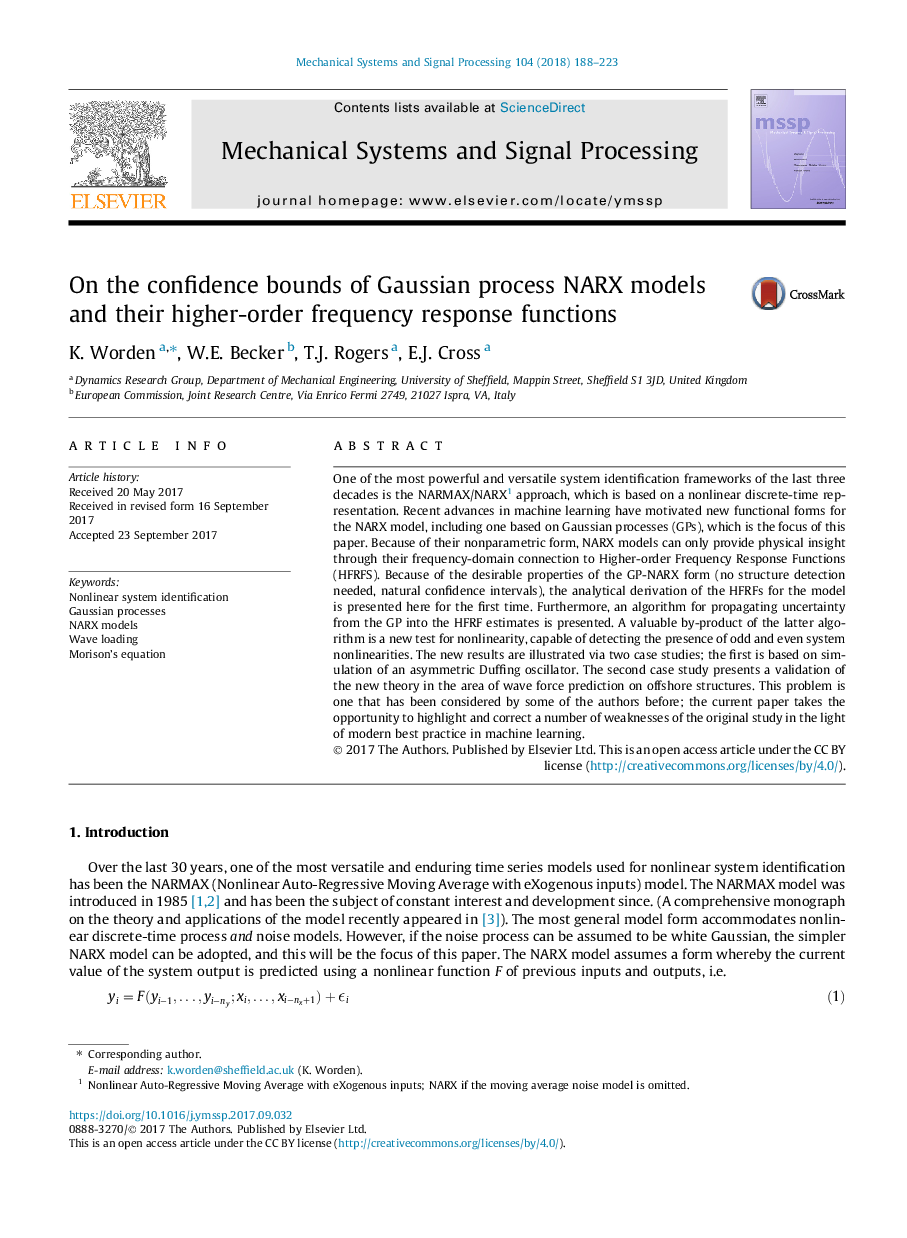| Article ID | Journal | Published Year | Pages | File Type |
|---|---|---|---|---|
| 6954545 | Mechanical Systems and Signal Processing | 2018 | 36 Pages |
Abstract
One of the most powerful and versatile system identification frameworks of the last three decades is the NARMAX/NARX1 approach, which is based on a nonlinear discrete-time representation. Recent advances in machine learning have motivated new functional forms for the NARX model, including one based on Gaussian processes (GPs), which is the focus of this paper. Because of their nonparametric form, NARX models can only provide physical insight through their frequency-domain connection to Higher-order Frequency Response Functions (HFRFS). Because of the desirable properties of the GP-NARX form (no structure detection needed, natural confidence intervals), the analytical derivation of the HFRFs for the model is presented here for the first time. Furthermore, an algorithm for propagating uncertainty from the GP into the HFRF estimates is presented. A valuable by-product of the latter algorithm is a new test for nonlinearity, capable of detecting the presence of odd and even system nonlinearities. The new results are illustrated via two case studies; the first is based on simulation of an asymmetric Duffing oscillator. The second case study presents a validation of the new theory in the area of wave force prediction on offshore structures. This problem is one that has been considered by some of the authors before; the current paper takes the opportunity to highlight and correct a number of weaknesses of the original study in the light of modern best practice in machine learning.
Related Topics
Physical Sciences and Engineering
Computer Science
Signal Processing
Authors
K. Worden, W.E. Becker, T.J. Rogers, E.J. Cross,
